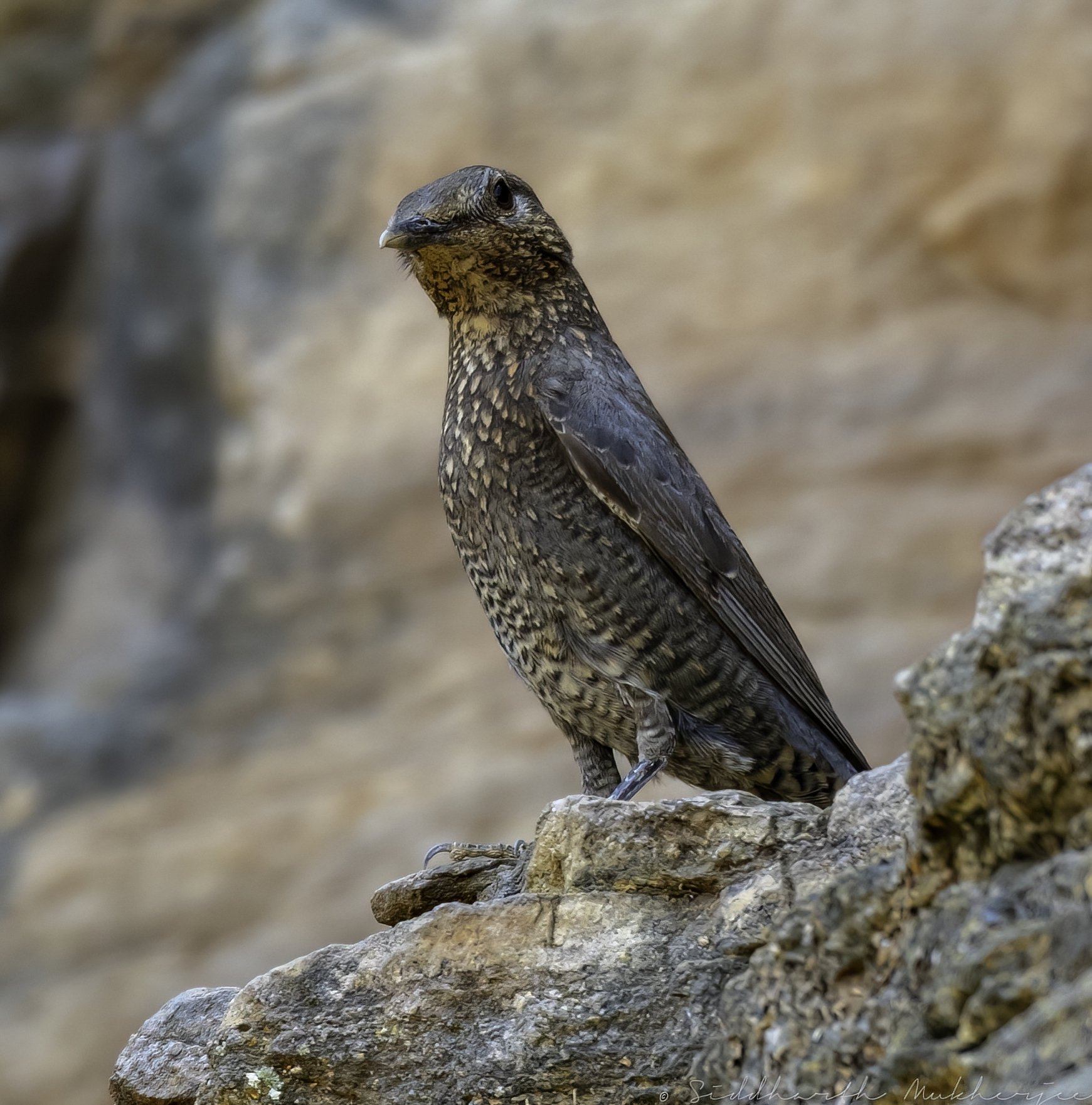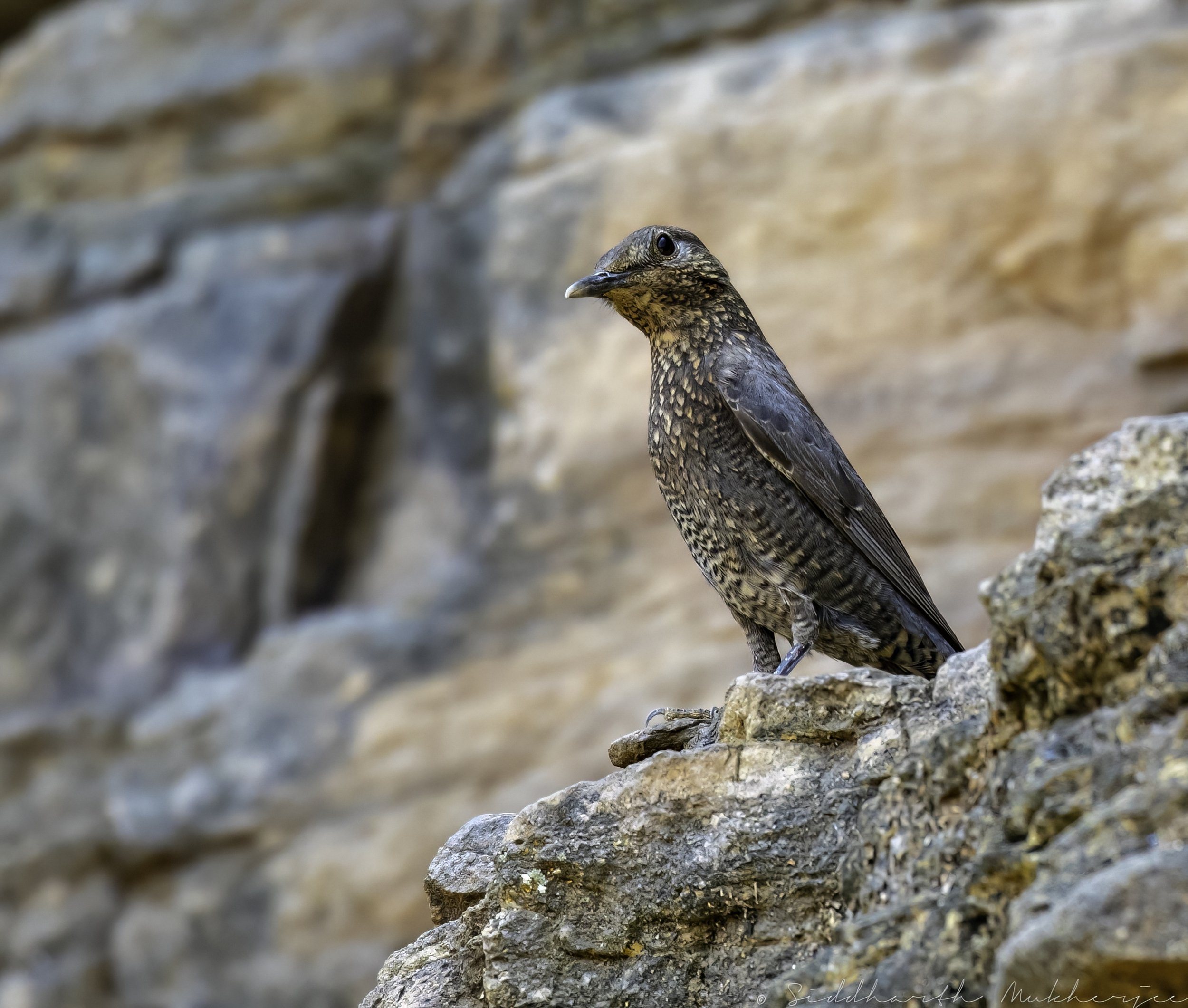Blue Rock Thrush
Monticola solitarius
Uma Maheshwaram Temple Complex, Telangana
Located in the central stretch of the Deccan Plateau, Telangana has sub-tropical climate and the terrain consists mostly of hills, mountain ranges, and thick dense forests covering an area of 27,292 km². The annual rainfall ranges between 1,100 mm to 1,200 mm and the annual temperature varies from 15 C to 45 C. The State is drained by a number of rivers which include Godavari and Krishna.
Telangana is endowed with rich diversity of flora and fauna. It has dense teak forests on the northern part along the banks of river Godavari. As per the Champion & Seth Classification of Forest Types (1968), the forests in Telangana belong to three Forest Type groups, which are further divided into 12 Forest Types. The State Government has taken up a massive greening programme, 'Telangana Ku Harita Haram' in the State to plant and protect 230 crore seedlings over a period of 4 years. This initiative aims at achieving the twin objectives of increasing the forest cover and reduce pressure on the existing forest resources, through massive community participation by Vana Samrakshna Samithis (VSS) and Eco-Development Committees (EDCs) in Protected Areas and Watershed Development Committees in the Watershed areas. Recorded Forest Area (RFA) in the State is 26,904 km² of which 20,353 km² is Reserved Forest, 5,939 km² is Protected Forest and 612 km² is Unclassed Forests. In Telangana, during the period 1st January 2015 to 5th February 2019, a total of 9,420 hectares of forest land was diverted for non-forestry purposes under the Forest Conservation Act, 1980 (MoEF & CC, 2019). As per the information received from the State during that last two years, 12,730 ha of plantations including avenue plantations in the State.
Three National Parks and nine Wildlife Sanctuaries constitute the Protected Area network of the State covering 5.08% of its geographical area and our focus area today is the northern fringe of the Nallamalla forest located both in Telangana and Andhra Pradesh. It is part of the Eastern Ghats. The Nagarjunsagar-Srisailam Tiger Reserve, the largest tiger reserve in India spread over the five districts of Kurnool, Prakasam, Guntur, Nalgonda and Mahabub Nagar falls in its precincts.
Read about the tigers I have spent time with and documented.
Blue Rock Thrush - Male
Blue Rock Thrush - Female
Blue Rock Thrush
The Blue Rock Thrush (Monticola solitarius) is a species of chat. This thrush-like Old World flycatcher was formerly placed in the family Turdidae. It breeds in southern Europe, northwest Africa, and from Central Asia to northern China and Malaysia. The blue rock thrush is the official national bird of Malta (the word for it in Maltese being Merill) and was shown on the Lm 1 coins that were part of the country's former currency.
It is a medium-sized thrush-like bird, often seen on mountainsides, sea cliffs, quarries, ruins, and even towns. As is the norm among birds the males are unmistakable: the western birds are dark blue all over, but may appear all dark at a distance; the eastern birds are blue with orange underparts. The female of the species is dark brown above and finely barred below. Their long bill, wings, and tail make for a distinctive and very different shape than the Rufous-tailed Rock-Thrush. Their song is melodic and blackbird-like.
The blue rock thrush was described by Carl Linnaeus in 1758 in the 10th edition of his Systema Naturae under the binomial name Turdus solitarius. The scientific name is from Latin. Monticola is from mons, montis "mountain", and colere, "to dwell", and the specific epithet solitarius means "solitary".
The rock thrush genus Monticola was formerly placed in the family Turdidae but molecular phylogenetic studies have shown that the species in the genus are more closely related to members of the Old World flycatcher family Muscicapidae.
There are five recognised subspecies:
Monticola solitarius solitarius - Breeding in North West Africa, Southern Europe and east through the Mediterranean (including the Balearics, Corsica, Malta and the Dodecanese) to Turkey and the Caucasus, non breeding, migratory birds, are also found in North Africa and Arabia.
Monticola solitarius longirostris - This is smaller than the nominate and both adult males and females are paler in colour. They occupy the Eastern Mediterranean through Turkey, Afghanistan, Pakistan and Kashmir and some migrate south to North East Africa, Arabia and North West India.
Monticola solitarius pandoo - Again this sub-species is smaller than the nominate and breeds in central and eastern Asia from the Himalayas through China into North Vietnam migrating south during the winter into South East Asia, Indonesia and Borneo.
Monticola solitarius philippensis - Confined to the Far East regions of Asia this bird breeds from Mongolia across to North East China, Korea, Japan and islands to its north within the Japanese archipelago and South to the Ryukyu archipelago, Taiwan and the Northern Philippines migrating south to South East China, Taiwan, the Philippines and the western Pacific islands of Micronesia.
Monticola solitarius madoci - Finally, the smallest of the sub-species inhabits the Malay Peninsula, Northern Sumatra and the far south of Thailand.
There is a proposal to split Monticola solitarius into two species: a western taxon comprising Monticola solitarius solitarius and Monticola solitarius longirostris and an eastern taxon with Monticola solitarius philippensis, Monticola solitarius pandoo and Monticola solitarius madoci.
Blue Rock Thrush - Migration Map
Source: BirdCount.in
The blue rock thrush is a starling-sized bird, 21–23 cm (8.3–9.1 in) in length with a long slim bill. The breeding male of the nominate subspecies is unmistakable, with all blue-grey plumage apart from its darker wings. Females and immatures are much less striking, with dark brown upperparts, and paler brown scaly underparts. The male of the subspecies Monticola solitarius philippensis has rufous-chestnut plumage from the mid-breast down to the undertail. Both sexes lack the reddish outer tail feathers of rock thrush.
Blue Rock Thrush - Distribution in India
Source: BirdCount.in
Although named as a thrush this bird is actually a chat. The adult male of the nominate race has a dark blue body with darker brown coloured wings and tail. It is the same size as a starling and has a long thick spiky slate grey bill. From a distance the male can appear to be black although the head is a bright blue. The adult female is a dull browny blue grey on the upperparts extending from the forehead, across the crown and down the back. The face is pale and mottled with thin brown markings almost with the appearance of scales, which run down to the mid chest area. From the mid chest to the lower belly the body is pale with horizontal dark brown bars across the belly from flank to flank. Juveniles are similar to females but slighter darker with bolder underpart markings, although there is no blue colouration or shading on the plumage whatsoever. There are a total of five sub-species of blue rock thrush. The colour and patternation differences from the nominate of four of the sub-species are subtle, however the adult male of the sub-species Monticola solitarius philippensis is strikingly different, in that whilst the body of the bird is predominantly a bold blue, the breast, belly and undertail areas are a contrasting rufous to chestnut brown shade. Both sexes vocalise using a melody of high pitched warbling whistles or a deeper ‘chook – chook’ sound. The song can be is similar to that of a blackbird and the blue rock will frequently mimic the calls of other bird species.
Whilst the majority of blue rock thrushes are sedentary a limited number do migrate from their breeding grounds annually; flying only by night in small groups of up to five birds.
These birds were photographed in and around the temple complex of Uma Maheshwaram. This is a temple dedicated to the Hindu god Shiva located in the Nallamala Forest around 100 kilometers from Hyderabad on the Hyderabad-Srisailam highway, about 4 kms from the village of Rangapur, Achampet.
Uma Maheshwaram is the northern gateway of Srisailam — one of the jyotirlingas, on a hill surrounded by high trees. Nearby hills shield the Uma Maheshwaram temple and the 500-metre stretch to PapaNasanam from sunlight for most of the day, maintaining a temperature lower than the surroundings through out the year. The area abounds in flora and fauna like the beautiful and vulnerable Yellow-throated Bulbul. Read about the birds of Uma Maheshwaram - the few I have already talked about here - the rest I still need to write.
‡‡‡‡‡
For a print of the beautiful birds from my various sojourns click on the button below to read my process and order a limited edition canvas.
‡‡‡‡‡
Related Posts




















